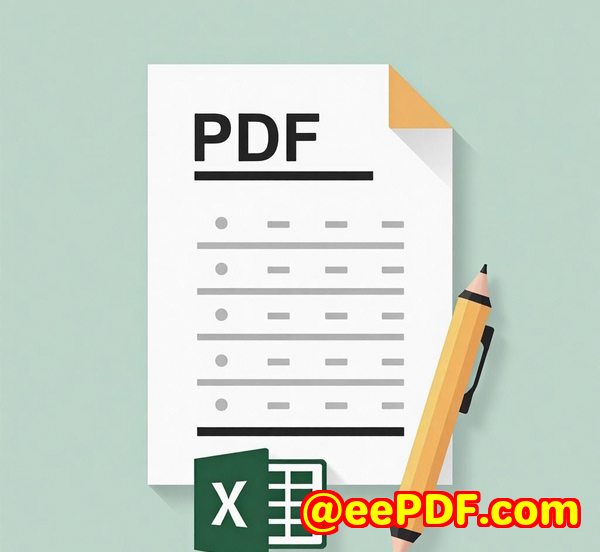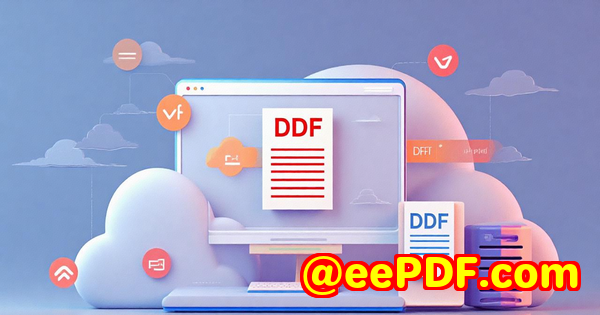Best DWG to EPS Converter for Publishing Vector Graphics in Academic Research Papers
Best DWG to EPS Converter for Publishing Vector Graphics in Academic Research Papers
If you've ever wrestled with getting your AutoCAD drawings ready for academic papers, you know the struggle.
I remember late nights trying to get crisp, scalable vector graphics from DWG files, only to end up with blurry images or huge file sizes that wouldn't play nice with my publisher's formatting requirements.
The pain of converting these complex drawings into a format suitable for academic publishing can be a real headache especially when your tools don't handle vector data properly.
That's why when I stumbled upon VeryDOC DWG to Vector Converter (DWG2Vector), it changed the game for me.

For anyone who's handling CAD drawings in research papers engineers, architects, scientists this tool is a lifesaver.
It's a command-line and SDK solution designed for Windows and Linux developers, built specifically to convert DWG and DXF files into high-quality vector formats that journals love, like EPS and PDF.
Why DWG to EPS Conversion Matters in Academic Publishing
Academic journals usually require figures and diagrams to be in vector formats like EPS because vectors maintain sharpness at any scale, crucial for print clarity.
Raster images? They pixelate, look sloppy, and might get rejected outright.
But AutoCAD's native DWG files aren't always easy to convert directly into EPS without losing quality or messing up the layout.
That's the gap VeryDOC's DWG2Vector fills.
It lets you batch convert complex DWG files into clean, publication-ready EPS files plus other vector formats like PDF, SVG, WMF, and more without relying on AutoCAD itself.
What's Under the Hood: Features That Made My Workflow Smooth
After I tried it, what stood out was the combination of power and flexibility.
Here are some features I found particularly handy:
-
Batch Conversion at Scale:
Instead of converting one DWG file at a time (which is a killer when you have dozens of drawings), I ran batch jobs converting entire folders of DWG and DXF files into EPS in minutes. This saved hours.
-
Supports Multiple Vector Formats:
It's not just EPS. I've exported to PDF, SVG, and EMF depending on what the publisher requested. The flexibility meant no scrambling for alternative tools.
-
Command Line and SDK Options:
I'm not a fan of bulky GUI tools when automation is possible. DWG2Vector's command-line interface let me integrate it into scripts, automating the process. If you're a developer or power user, the SDK lets you embed this functionality in your own apps or workflows.
-
Customizable Output Settings:
You can set DPI resolution, paper size, colour modes, line widths, and even specify SHX font directories to preserve text styles. For academic publishing, this means your figures are exactly as you want them.
-
Multiple Layouts and Views:
DWG files often contain multiple layouts or views. DWG2Vector can create separate output files for each view, which saved me the hassle of manually isolating each drawing segment.
-
No AutoCAD Required:
This one was huge for me. You don't need AutoCAD installed, which means lighter system requirements and no licensing headaches.
How This Stands Out from Other Tools I've Tried
Before DWG2Vector, I was juggling between several converters that promised vector output but often failed on one or more fronts:
-
Clunky GUI with No Automation:
Most free or low-cost converters force manual conversions one by one, killing productivity.
-
Incomplete Format Support:
Some tools only convert to PDF or raster images, leaving out EPS or SVG, which are critical in academia.
-
Loss of Quality or Fonts:
Text in DWG files often ends up as gibberish or missing if the converter can't handle SHX fonts properly.
-
No Batch Processing:
If you have a pile of drawings, manual conversion is a nightmare.
VeryDOC DWG2Vector nailed these issues perfectly. The batch feature and command line options allowed me to streamline my entire publication workflow.
Real-World Example: How I Used DWG2Vector for My Research Paper
I was working on a structural engineering paper with about 30 detailed CAD diagrams illustrating stress points on different bridge components.
My publisher wanted:
-
Clean EPS files for crisp vector graphics
-
Separate files for each diagram view
-
Consistent line weights and black-and-white colour mode
Here's what I did:
-
Batch Converted All DWG Files:
Using the command line, I pointed DWG2Vector to the folder containing all drawings, set the output to EPS, and specified black and white mode.
-
Set Line Widths:
The tool allowed me to assign different line widths for clarity, making technical lines more visible while keeping the diagram clean.
-
Verified Multiple Layout Support:
Each drawing's views were saved as separate EPS files automatically.
-
Seamlessly Integrated with Publishing Software:
Because the output was native vector EPS, it imported perfectly into Adobe Illustrator and the journal's publishing platform, no rasterizing needed.
The whole process took a fraction of the time I used to spend manually exporting and cleaning up images. No more blurry diagrams or lost font text.
Who Should Use VeryDOC DWG to Vector Converter?
If you fit into one or more of these categories, this software will save you headaches:
-
Researchers needing to include CAD drawings in journal articles or academic presentations
-
Engineers and architects preparing professional reports or documentation
-
Software developers integrating DWG to vector conversion into CAD-related applications or automated workflows
-
Publishers and graphic designers working with technical illustrations from AutoCAD files
Final Thoughts: Why I'd Recommend This Tool
The VeryDOC DWG to Vector Converter solved a real, persistent problem for me getting clean, scalable vector graphics from DWG files without fuss.
The batch processing, wide format support (especially EPS), and command line flexibility made it an indispensable part of my toolkit.
If you're juggling complex DWG or DXF files and need them ready for academic publishing or professional use, this tool will save you time and frustration.
Click here to try it out for yourself: https://www.verydoc.com/dwg-to-vector.html
Start your free trial now and elevate your vector graphic workflow.
Custom Development Services by VeryDOC
VeryDOC is not just about out-of-the-box tools. They offer custom development services tailored to your technical needs. Whether you need specialised PDF processing on Linux, Windows, or macOS, or custom SDKs, they've got you covered.
They work with a broad tech stack including Python, PHP, C/C++, Windows API, Linux, macOS, iOS, Android, JavaScript, C#, .NET, and HTML5.
If you require custom virtual printer drivers, print job capturing, or document format analysis including PDF, PCL, Postscript, and more VeryDOC can build bespoke solutions.
Their expertise also extends to barcode generation/recognition, OCR for scanned documents, report form generators, image/document management, cloud-based PDF conversion and signing, DRM protection, and font technologies.
Have a unique project in mind? Reach out at https://support.verypdf.com/ to discuss how VeryDOC can help build exactly what you need.
FAQs
Q1: Can DWG2Vector handle all versions of DWG and DXF files?
Yes, it supports multiple versions including R12, R13, R14, 2000, 2004, and later formats, ensuring compatibility with most AutoCAD drawings.
Q2: Is AutoCAD required to use DWG2Vector?
No, it's a standalone product and does not require AutoCAD installation, making it lightweight and cost-effective.
Q3: Can I automate the conversion process?
Absolutely. The command-line interface and SDK support make it easy to automate batch conversions or integrate into custom applications.
Q4: What output formats does DWG2Vector support?
It supports many vector formats including EPS, PDF, SVG, WMF, EMF, PostScript, SWF, PCL, HPGL, and XPS.
Q5: Can I control the appearance of the output files?
Yes, you can customise DPI, paper size, line width, color mode, and specify font directories to ensure the output matches your requirements.
Tags
-
DWG to EPS converter
-
Vector graphics for academic papers
-
AutoCAD DWG batch conversion
-
DWG to PDF SVG converter
-
VeryDOC DWG2Vector SDK



